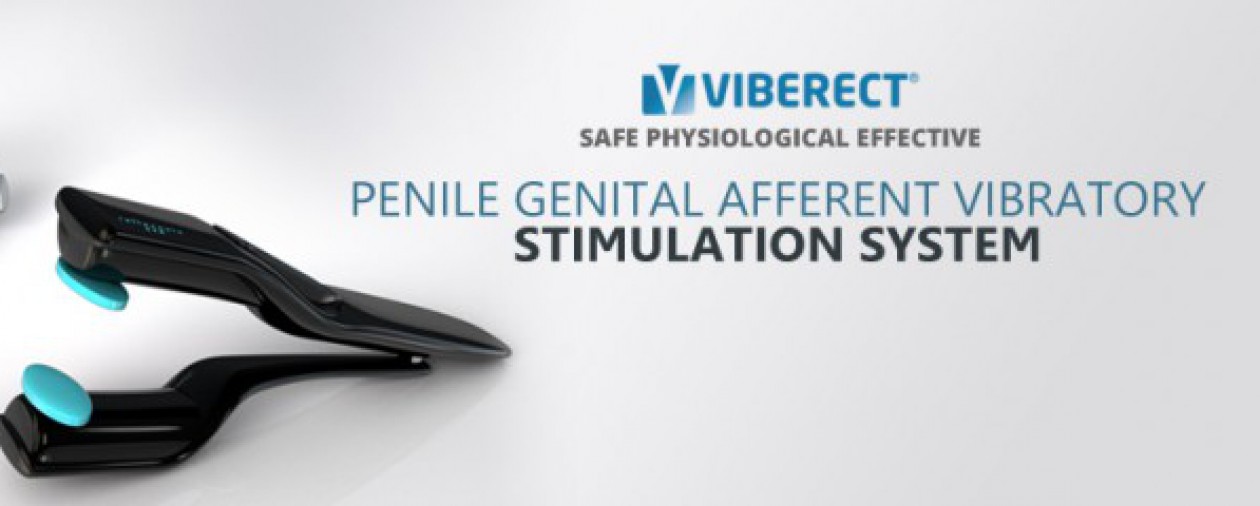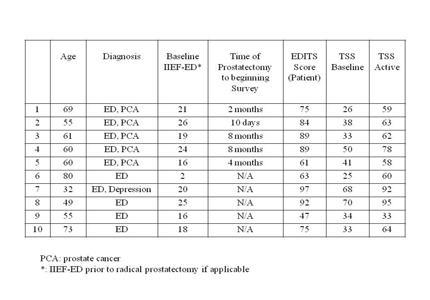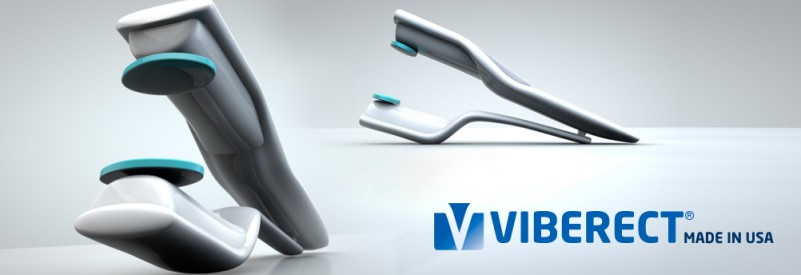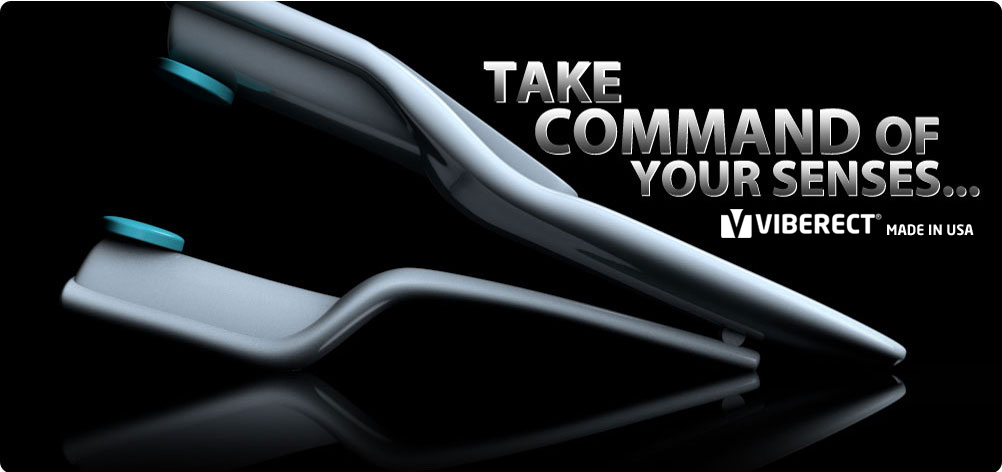VIBERECT® DEVICE USE BY MEN WITH ERECTILE DYSFUNCTION: SAFETY, EASE OF USE, TOLERABILITY, AND SATISFACTION SURVEY
Kambiz Tajkarimi MD1 and Arthur L. Burnett MD, MBA2
1Summit Urology Group, Chambersburg, Pennsylvania; 2Johns Hopkins Medical Institutions, Baltimore MD Podium Poster, November 2011 SMSNA 2011, Las Vegas, Nevada
Introduction: Penile erection is a nerve generated vascular and mechanical event. Genital afferents activate spinal nuclei and higher centers responsible for sexual and urinary function. Viberect® is a new FDA−cleared medical device indicated to provoke erection and to treat anejaculation in spinal cord injured men. We report a preliminary survey of Viberect® use by men with erectile dysfunction (ED).
Patients and Methods: A representative sample of urology patients with ED (N = 10) were recruited (Table 1). Men were instructed by a unique repetitive reflex teaching program for optimal Viberect® experience. Viberect® stimulation was performed at home for 5−10 minutes at 70−110 Hz at least 3 times a week for one month. Treatment satisfaction was assessed by Erectile Dysfunction Inventory of Treatment Satisfaction (EDITS) and Treatment Satisfaction Scale (TSS).
Results: All men completed the surveys. No complaints or adverse events were reported. Viberect® was easy to use, painless, and acceptable. 90% were satisfied with the Viberect®treatment (EDITS Index >50); mean EDITS index score was 77. Mean TSS score was increased significantly from baseline (41.8) to active (66.8) (p< 0.01). 90% would continue Viberect® treatment and recommend its use to their friends.
Conclusion: This preliminary survey suggests Viberect® use by men with ED is a safe, convenient, well−tolerated, and highly satisfying modality for treatment of ED. Randomized prospective trials are necessary to authenticate these important findings.
Comparison of Viberect® to Intracavernosal Vasoactive Agents using penile Duplex Doppler Ultrasound evaluation of penile erection
Suresh Sikka, Kambiz Tajkarimi, KhuloodKadhum, Mathew Freier, SreeMandava, Landon Trost, Arthur Burnett, and Wayne Hellstrom. Tulane University Department of Urology, New Orleans, Louisiana
Introduction and Objective: Viberect® is a new FDA-cleared vibratory medical device that stimulates genital afferent nerves and induces penile erection. The degree and quality of penile rigidity induced by Viberect® is unknown. This study evaluated penile blood flow parameters induced by Viberect® and compared findings to intracavernosal injection (ICI) of prostaglandin E1 (PGE1) using color duplex Doppler ultrasound (CDDU) technology.
Methods: Sixty-eight patients with ED underwent Viberect® stimulation prior to penile CDDU. Viberect® stimulation (simultaneous dorsal/ventral glans/corona and proximal shaft) was performed by the patient at 70 Hz frequency and amplitude of 2 mm for 6 minutes followed by immediate evaluation by CDDU as per Doppler ultrasound protocol. After flaccidity was attained, ICI using 7-15 mcg PGE1was administered and CDDU repeated.
Results: Twenty nine men ( “positive-responders” to Viberect®) demonstrated an 18-31% increased peak systolic velocity compared to ICI, with 90% tumescence and 60-70% rigidity (p=0.02). Seventeen patients (“borderline”) showed 80% tumescence and 30-40% rigidity with Viberect® which was 76-103% decreased compared to ICI. Only seven patients (“non-responders”) showed poor erection with Viberect®, but adequate response with 90% tumescence and 60% rigidity with PGE1 (147 – 171% difference; p=0.007).
Fifteen patients were unable to complete Viberect® stimulation due to impending ejaculation. No complaints of pain, priapism or other adverse events were reported with Viberect®.
Conclusions: Viberect® induces similar blood flow and erection responses as by ICI in the majority of patients undergoing CDDU evaluation. Stimulating the bulbocavernosus reflex with Viberect® is a safe, convenient, and well-tolerated modality for CDDU. Randomized prospective multicenter trials are needed to further validate these results and to assess the role of Viberect® during ED diagnosis.
Int J Impot Res. 1996 Dec;8(4):221-5.
Enhancement of erectile responses to vasoactive drugs by a variable amplitude oscillation device.
Chun SS, Fenemore J, Heaton JP, Johnston B, Morales A.
Department of Urology, Queen’s University, Kingston, Ontario, Canada.
The limitations of intracavernosal injection (ICI) of vaso-active drugs as a diagnostic tool in the evaluation of erectile dysfunction are well recognized and, prominently, include the artifacts induced by the unfamiliar environment on the patient. We report on the benefits of adding a vibratory stimulus to ICI to improve the sensitivity of this test in a population of 170 patients with erectile dysfunction who were evaluated using a standard protocol. Intracavernosal pressure was measured following ICI alone and ICI with vibratory stimulation of the penis. A statistically significant improvement in intracavernosal pressure (ICP) with the addition of vibration was observed in 87% of the subjects as compared to ICI. In 52% the improvement in ICP was greater than 20% over that achieved by ICI. This study showed that the addition of vibration to intracavernosal administration of vaso-active drugs significantly increases the erectile response in a controlled and reproducible manner. Vibratory stimulation provides a better reflection of erectile potential than the pharmacological challenge alone.
Abstract
Objective Assessment of the Efficacy of the Viberect Device to Provoke Penile Erection in Men with no ED Johns Hopkins University Preliminary study
Introduction & Objectives
Current strategies employed to treat erectile dysfunction (ED) all target the vascular component of erections to achieve improved tumescence and rigidity for sexual intercourse. A new, FDA-approved treatment for ED, which exploits vibratory stimulation of genital afferent nerves as means of provoking erections, the Viberect® device, has not been rigorously assessed in clinical studies. The objective of this study was to objectively assess the efficacy of the Viberect® device to provoke erections in healthy men with no ED.
Methods
Six healthy subjects with normal erectile function as measured by responses to the IIEF-EF questionnaire were studied. The Erection Hardness Score (EHS) was used for subjective assessment of maximally rigid erection. Subjects were instructed on a penile stretching exercise meant to stimulate the bulbocavernosus reflex to achieve reflex erection. The Rigiscan device, set to the provocative ambulatory mode, was applied to the penis, and the Viberect® treatment initiated without any external visual sexual stimulation (VSS). Rigiscan measures of rigidity were recorded, as were adverse effects.
Results
Subjective assessments of erectile rigidity using the EHS for both the BCR stretching exercise as well as the Viberect® treatment did demonstrate a notable erectile response. 5/6 patients scored their maximal erection with the Viberect® device at 4/4 without the use of any visual sexual stimulation. Objective assessment with the Rigiscan did demonstrate the ability of the Viberect® to stimulate an erectile response, with a mean increase in penile basal girth of 2.3 cm, mean tumescence percentage above baseline of 24.5% and an average time of the tumescence episode beyond 55% total rigidity of 15%. There were no reported adverse effects, and all subjects felt that the Viberect® would be a reasonable, practical treatment for ED.
Conclusion
The results of this study provide evidence of an erectile stimulatory effect of penile vibratory stimulation utilizing the Viberect® device in healthy men without ED in the absence of VSS. These results provide proof that penile vibratory stimulation can be employed to provoke erections, and support further study of this modality in men with ED.
2009 Jul;6(7):1867-74. Epub 2009 Apr 24. Prevalence and characteristics of vibrator use by men in the United States
Reece M, Herbenick D, Sanders SA, Dodge B, Ghassemi A, Fortenberry JD. Center for Sexual Health Promotion, Indiana University, USA.
INTRODUCTION:
While vibrating products have been recommended by clinicians for the treatment of male sexual dysfunctions, knowledge is lacking with regard to the prevalence of vibrator use among men in the United States, the characteristics of men who use vibrators, and whether there are relations between vibrator use and sexual function among men.
AIMS:
To establish lifetime and recent prevalence rates for vibrator use by men in the United States, to document the characteristics of men who use vibrators and their reasons for using vibrators, and to explore relations between men’s vibrator use and sexual function.
METHODS:
During April 2008, data were collected from a population-based cross-sectional survey of 1,047 men aged 18-60 years in the United States. Analyses were conducted using post-stratification data weights.
MAIN OUTCOME MEASURE:
Measures included sociodemographics, health status and health-related behaviors, sexual behaviors, vibrator use, and sexual function.
RESULTS:
For both solo and partnered sexual activities, the prevalence of men who had incorporated a vibrator into sexual activities during their lives was 44.8%, with 10.0% having done so in the past month, 14.2% in the past year, and 20.5% over 1 year ago. Men who had used vibrators, particularly those with more recent use, were more likely to report participation in sexual health promoting behaviors, such as testicular self-exam. Men who had used vibrators recently also scored higher on four of the five domains of the International Index of Erectile Function (erectile function, intercourse satisfaction, orgasmic function, and sexual desire).
CONCLUSIONS:
Among men in the United States, vibrator use during solo and partnered sexual interactions is common and is associated with a wide array of positive sexual health characteristics. Future research should continue to explore ways in which men incorporate vibrators into solo sexual acts, partnered sexual play, and sexual intercourse.






